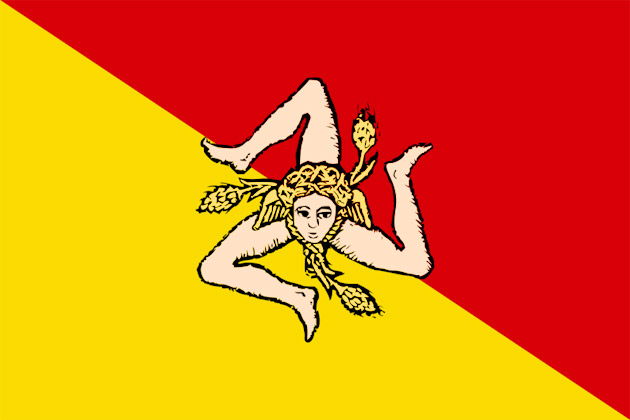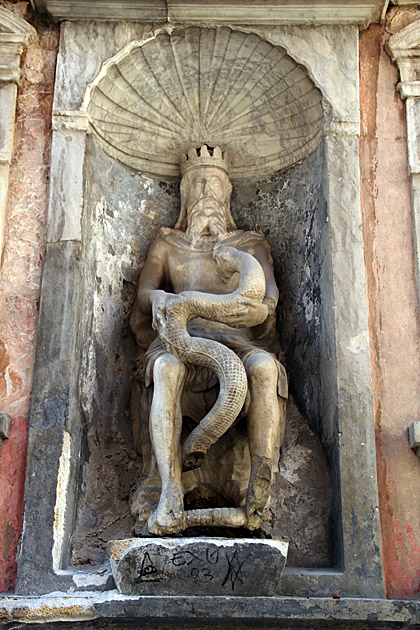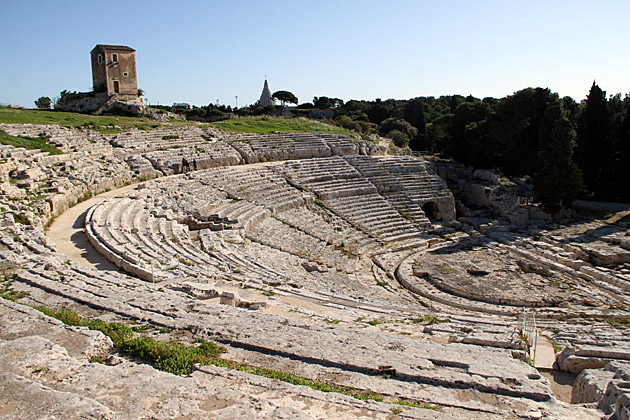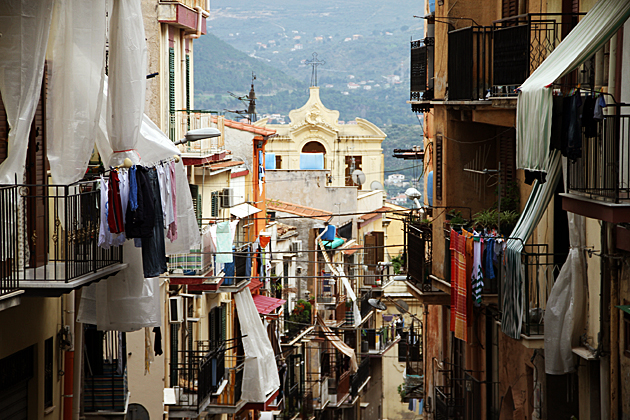The Flag of Sicily
What do Medusa, heads of wheat and human legs all have in common? Surely not more than this one thing: they all appear on the flag of Sicily, one of the strangest flags in the world.

The three-legged symbol is known as the trinacria, and has represented the island since the Sicilian Vespers: the successful 1282 revolt against French King Charles I. The three legs represent Sicily’s extreme points, Capo Peloro (northeast), Capo Passero (south) and Capo Lilibeo (west), and the triangular shape of the island is reflected in the pattern.
Medusa’s head is frequently used as a symbol to ward off evil. With wings sprouting from her ears, snakes for hair, and that famous knack for turning people into stone, her appearance on the flag is probably meant to warn away any future conquerors from poor, war-prone Sicily. The heads of wheat are a symbol of fertility, paying tribute to the island’s famously rich soil. And the colors of the flag, red and yellow, represent Palermo and Corleone respectively: the towns in which the rebellion of the Vespers began.
The three bent legs are the real oddity, but stranger still is the fact they appear on the flag of another territory: the Isle of Man. Thought to represent the concepts of progress and competition, this symbol was in use by both the ancient Greeks and Celts. The conjoined legs have a long history, appearing on Greek coins found near Syracuse, as far back as 300 BC.




Pingback: Travel Warriors: Jürgen and Mike from 'For 91 Days' - Exploring South America : Exploring South America
I thought I read somewhere that the three legs on the Sicilian flag represented the Asia, Africa and Sicily. Edicate me if this is incorrect.
The three legs represent the three promontories of the island: Capo Peloro (Punta del Faro, Messina: North-East), Capo Passero (Siracusa: South), Capo Lilibeo (or Capo Boeo, Marsala: West). This particular reference is found in the greek word triskelesand connects to the geographic meaning: treis (three) and akra (promontory). In Latin too, triquetra (three vertices).